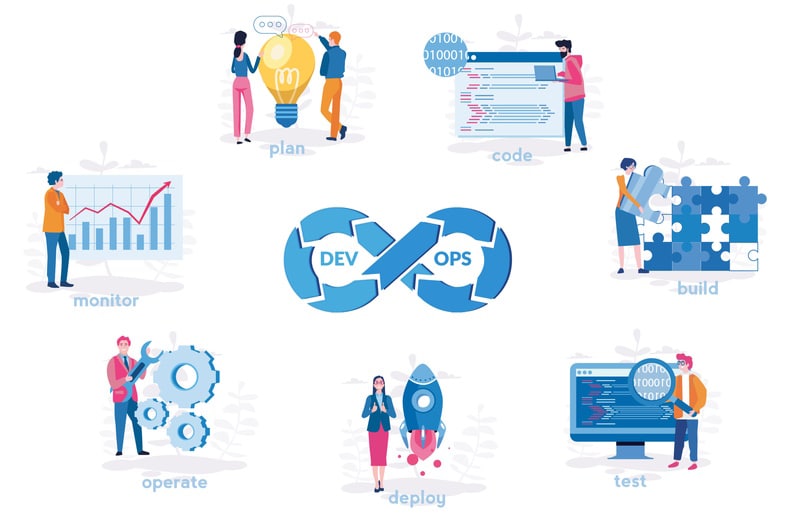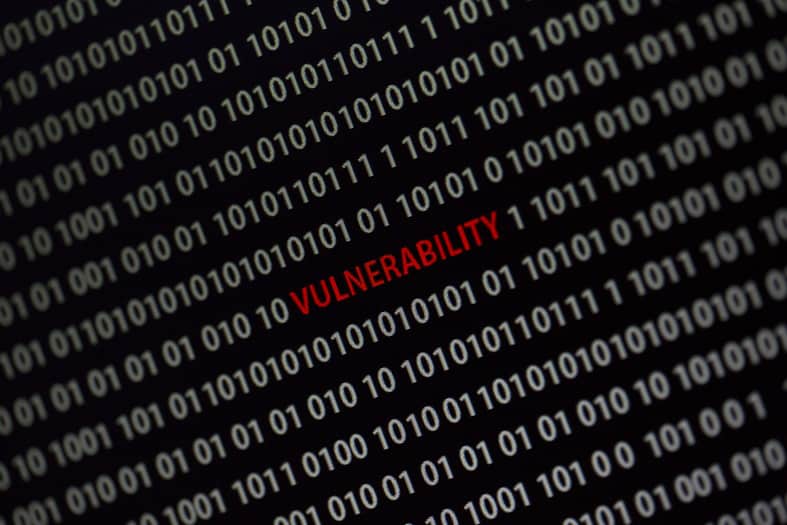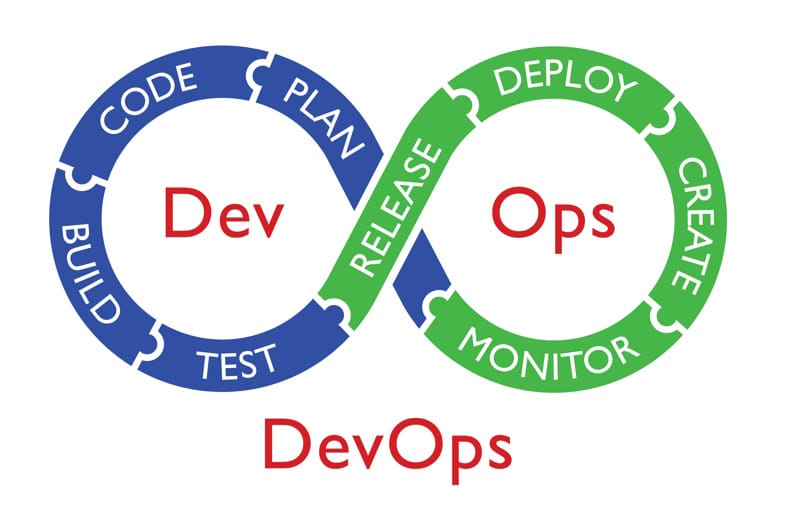Secure DevOps, also known as SecDevOps, is a methodology that combines the principles of development operations (DevOps) with security practices to ensure unprecedented protection in software development. It aims to integrate security measures throughout the entire software development lifecycle, from planning and designing to coding, testing, and deployment. By incorporating security into every stage of the process, SecDevOps provides organizations with enhanced resilience against cyber threats. Secure DevOps is a revolutionary approach that integrates security into every aspect of software development. By combining the principles of DevOps with proactive security measures, SecDevOps offers unprecedented protection against cyber threats. Its emphasis on incorporating security throughout the entire development lifecycle ensures that vulnerabilities are addressed early on and minimizes risks associated with traditional software development approaches. Despite challenges in implementation, organizations can reap the benefits of SecDevOps by embracing this methodology and fostering a culture of cybersecurity within their development teams.

Table of Contents
What Is Secure DevOps (SecDevOps)?
Secure DevOps definition states that SecDevOps is a software development approach that integrates security practices into the entire DevOps lifecycle to ensure the delivery of secure and resilient applications. This methodology aims to bridge the gap between cybersecurity teams and development teams by incorporating security considerations at every stage of the software development lifecycle.
By implementing secure DevOps practices, organizations can address potential security vulnerabilities early in the development process, reducing the risk of exposing sensitive data or compromising system integrity. It emphasizes collaboration between different teams involved in software development, including developers, operations personnel, and security experts. This integrated approach enables faster identification and remediation of security issues while ensuring continuous improvement in application security. Secure DevOps supports a proactive rather than reactive stance towards security, promoting a culture where all stakeholders prioritize robustness and resilience from the onset of project planning to post-deployment maintenance.
How SecDevOps Differs From DevSecOps and DevOpsSec
Distinct from the approaches of DevSecOps and DevOpsSec, SecDevOps presents a unique fusion of security practices within the realm of development operations, evoking a sense of intrigue and anticipation among its audience. While DevSecOps focuses on integrating security principles into the entire software development lifecycle and DevOpsSec emphasizes the importance of incorporating operational concerns into security practices, SecDevOps goes beyond these concepts by placing an equal emphasis on both security and development operations. It aims to seamlessly integrate security measures into the software development process, ensuring that secure coding practices are implemented from the very beginning. By doing so, SecDevOps offers unprecedented protection against potential vulnerabilities and threats throughout all stages of software development, ultimately leading to more robust and secure applications.

Importance of SecDevOps
The importance of SecDevOps can be understood from several perspectives:
Early Detection and Mitigation of Security Vulnerabilities
Traditional security practices often involve conducting security assessments and testing after development is complete. This can lead to the discovery of vulnerabilities late in the development cycle, which can be expensive and time-consuming to fix. SecDevOps promotes the integration of security testing and validation from the early stages of development, helping to identify and address security issues sooner, reducing their impact and cost.

Faster Response to Security Threats
In the modern landscape of cyber threats, organizations need to respond quickly to emerging security vulnerabilities and attacks. By incorporating security into the DevOps workflow, teams can implement security patches and updates rapidly, reducing the window of exposure to potential threats.
Cultural Shift Towards Security
SecDevOps encourages a cultural shift where security is everyone’s responsibility, not just the domain of the security team. Developers, operations personnel, and security professionals collaborate closely to ensure that security is an integral part of the development process. This collective ownership of security leads to a better overall security posture.
Automated Security Testing
Automation is a key principle of DevOps, and it also plays a significant role in SecDevOps. Security testing can be automated to a large extent, allowing for continuous security assessments throughout the development pipeline. This automation ensures consistent and repeatable security checks, reducing the likelihood of human error.
Compliance and Regulatory Requirements
Many industries are subject to strict compliance and regulatory requirements concerning data protection and security. SecDevOps can help organizations adhere to these requirements by integrating security controls and audits directly into the development process, ensuring that compliance is maintained.
Common SecDevOps Challenges and How To Overcome Them
Below are SecDevOps challenges with their remedies:
Challenge: Resistance To Change
Resistance to change is a significant challenge faced in implementing SecDevOps, as organizations often struggle to adopt new practices that integrate security considerations into their existing processes. This challenge arises due to various factors including cultural resistance, lack of awareness about the importance of security, and fear of disruptions caused by changes in the development approach. Firstly, cultural resistance can stem from a deep-rooted belief that security is the responsibility of a separate team or department and not something that should be integrated into the entire development lifecycle.
Secondly, there may be a lack of awareness about the importance of security and how it can impact an organization’s reputation and financial stability. Finally, teams may resist change due to fear that adopting secure DevOps practices will disrupt their current workflows and slow down development speed.
Solution: Use Automation and Innovation
Addressing the challenge of resistance to change in implementing SecDevOps can be facilitated through the use of automation and innovation. Automation plays a crucial role in streamlining and accelerating various tasks involved in secure DevOps practices. By automating security processes, code reviews, vulnerability scanning, and compliance assessments, organizations can ensure that security is an integral part of every step in the software development lifecycle. This not only saves time but also reduces human error and allows for the consistent application of security measures across all projects.
Innovation further enhances secure DevOps by introducing new tools and technologies that enable proactive threat detection, rapid incident response, and continuous monitoring. By embracing innovative solutions such as machine learning algorithms for anomaly detection or containerization techniques for secure deployment, organizations can achieve unprecedented protection against evolving cyber threats. The combination of automated security tools and innovation empowers organizations to overcome resistance to change and embrace secure DevOps practices that prioritize security without hindering development speed or efficiency.
Challenge: Silos
Silos within organizations pose a significant challenge in implementing SecDevOps practices as they hinder effective collaboration and communication between different teams involved in the software development process. The traditional organizational structure often separates security and development teams, resulting in a lack of shared responsibility and limited interaction. This leads to several DevOps security challenges, such as delayed identification and resolution of security issues, misalignment of priorities, and knowledge gaps between development and operations.
To overcome this challenge, organizations need to break down these silos by fostering cross-functional collaboration, promoting open communication channels, encouraging knowledge sharing, and emphasizing shared responsibility for security throughout the entire software development process.
Solution: Encourage Your Team To Embrace Broader Accountability
To overcome this challenge, the solution proposed is to encourage the development team to embrace broader accountability. This entails integrating security practices into the DevOps process and fostering a culture where all team members are responsible for ensuring security controls are implemented effectively. By doing so, each member becomes accountable for their actions and contributions towards maintaining secure DevOps practices.
Note:
This approach not only enhances overall security but also promotes a shared understanding of the importance of security within the development team, leading to improved collaboration and better integration of security measures throughout the software development lifecycle.Challenge: Security Skills Shortage
One significant challenge in the realm of software development is the scarcity of individuals possessing adequate security skills. The increasing demand for secure DevOps practices, which aim to integrate security into the entire software development lifecycle, has highlighted this issue even more.
Solution: Promote Security as an Additional Skill
To address this issue, organizations need to adopt a solution that promotes security as an additional skill. By incorporating security into the skill set of developers and operations teams, organizations can ensure that security is considered throughout the software development lifecycle. This approach not only helps bridge the gap between development and security teams but also enhances overall protection against threats. Promoting security as an additional skill empowers individuals to take ownership of secure coding practices, vulnerability assessments, and threat modeling, thus contributing to unprecedented protection in the realm of secure DevOps.
Challenge: More Developers Than Security Engineers
The demand for security engineers is not keeping up with the increasing number of developers in organizations. This discrepancy poses a significant challenge to the development process as it leaves DevOps teams vulnerable to security threats. With more developers than security engineers, the focus on secure code and identifying security vulnerabilities becomes diluted. As a result, organizations face an uphill battle in ensuring that their products and systems are adequately protected against cyber threats. The shortage of security professionals further exacerbates this challenge, as it limits the capacity of security teams to effectively address potential vulnerabilities throughout the development lifecycle.
Solution: Implementing Tooling and Automation
Implementing tooling and automation can effectively address the shortage of security engineers in organizations, enhancing the development process by streamlining security measures and mitigating potential vulnerabilities. By integrating security practices into DevOps processes, organizations can leverage DevOps tools for automating security testing throughout the software development lifecycle. This enables continuous integration and deployment while ensuring that any vulnerabilities are identified and addressed early on.
Successful SecDevOps Implementation
Successful implementation of SecDevOps requires a comprehensive understanding of the integration process and careful consideration of the unique requirements and constraints of each organization. To achieve this, organizations should follow a systematic approach that focuses on integrating security into every phase of the software development process. This can be accomplished by following these key steps:

Identify Security Requirements
Organizations need to identify their specific security needs and requirements early in the development process. This includes conducting risk assessments, threat modeling, and defining security objectives.
Automate Security Testing
Automation plays a crucial role in successful SecDevOps implementation. By automating security testing, organizations can continuously assess their application’s security posture throughout the development lifecycle. This helps in identifying vulnerabilities and weaknesses early on. Enabling automated security necessitates access to appropriate tools and the seamless integration of these tools into automated continuous integration and continuous deployment (CI/CD) pipelines. Tools related to application security (AppSec), like static application security testing (SAST), interactive application security testing (IAST), dynamic application security testing (DAST), and source composition analysis (SCA), assist in the early detection of vulnerabilities during the software development lifecycle (SDLC).
Implement Continuous Monitoring
Continuous monitoring allows organizations to detect any potential security breaches or anomalies in real time. By implementing robust monitoring tools and processes, organizations can proactively identify and respond to any emerging threats or vulnerabilities. An advanced adoption of DevSecOps will include robust automation, orchestration, unchanging infrastructure, configuration management, containerization, and even serverless computing environments.

What are SecDevOps Best Practices
An effective approach to integrating security into the software development process is to establish clear communication channels between development and security teams, enabling proactive collaboration and knowledge sharing. By adopting this approach, organizations can ensure that security concerns are addressed early on in the development cycles, minimizing the risks of vulnerabilities being introduced into applications.
One of the key best practices in secure DevOps is to implement application security measures throughout the entire software development lifecycle, including code review, vulnerability scanning, and penetration testing. This ensures that potential security issues are identified and resolved at each stage of the development process.
Additionally, privileged access management should be implemented to control and monitor access to sensitive systems and data. By limiting privileged access rights only to those who require it for their job responsibilities and regularly monitoring their activities, organizations can reduce the risk of insider threats and unauthorized access to critical resources.
Frequently Asked Questions
How Can Resistance To Change Be Overcome in Implementing SecDevOps?
Resistance to change in implementing SecDevOps can be overcome by providing comprehensive training and education, clearly communicating the benefits of the approach, involving stakeholders in decision-making processes, and addressing any concerns or misconceptions that may arise.
What Are Some Ways To Encourage Teams To Embrace Broader Accountability in SecDevOps?
One way to encourage teams to embrace broader accountability in SecDevOps is by implementing a system of regular audits and assessments, ensuring that all team members are held responsible for their actions and the security of the overall system.
How Can the Security Skills Shortage Be Addressed in a SecDevOps Environment?
The security skills shortage in a SecDevOps environment can be addressed by implementing comprehensive training programs, fostering collaboration between security and development teams, leveraging automation tools for threat detection and response, and hiring specialized personnel with relevant expertise.
What Are the Benefits of Implementing Tooling and Automation in SecDevOps?
Implementing tooling and automation in SecDevOps offers numerous benefits. It enhances efficiency, reduces human error, enables continuous monitoring and testing, facilitates rapid deployment and scalability, and ensures consistency in security practices.
Conclusion
Secure DevOps is a crucial methodology for organizations looking to enhance their protection against cyber threats and deliver secure software. By integrating security practices into every step of the development lifecycle, organizations can proactively identify and mitigate vulnerabilities, resulting in high-quality, secure applications. However, it is important to address challenges such as resistance to change and leverage tooling and automation for successful SecDevOps implementation. Embracing SecDevOps best practices empower organizations to achieve unprecedented levels of protection and efficiency in their software development processes.

